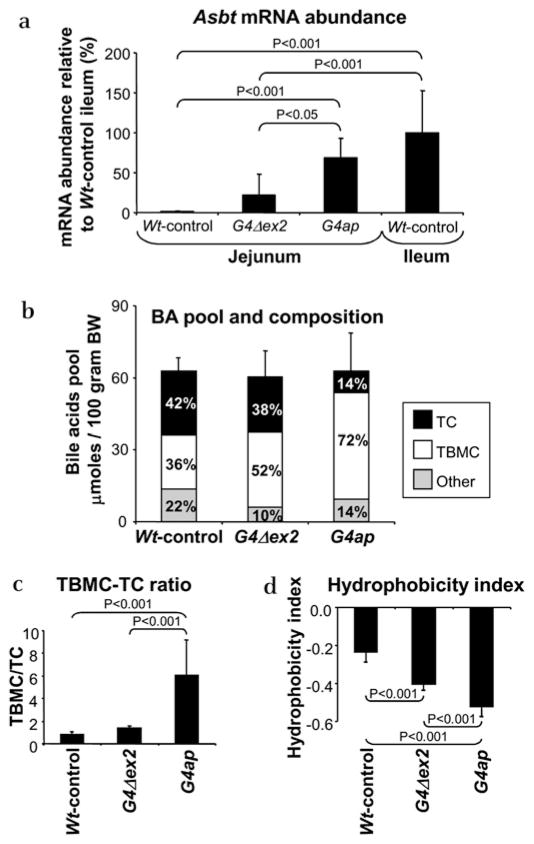Figure 4.
Intestinal Gata4 recombination results in an enrichment of tauro-β-muricholate (TBMC) and reduction of taurocholate (TC) in the bile acid pool. (a) Real-time reverse transcriptase–PCR of apical sodium-dependent bile acid transporter (Asbt) mRNA in Wt-control jejunum (segment 3) and ileum (segment 5), G4Δex2 jejunum and G4ap jejunum shows a 22% and 69% transformation to wild-type ileal levels in jejunum of G4Δex2 and G4ap mice, respectively. n=6–10 in each group. (b) Bile acid (BA) pool size, as determined by the total bile acid content in liver, gall bladder and small intestine, is similar among Wt-control, G4Δex2 and G4ap mice, but demonstrates an increase in TBMC, and decrease in TC and other bile acids in G4Δex2 and G4ap mice as compared with Wt-controls. (c) The TBMC/TC ratio of the bile acid pool reveals a 2.2-fold increase in G4Δex2 mice and a 7.2-fold (p<0.001) increase in G4ap mice as compared with Wt-controls. (d) The hydrophobicity index of the bile acid pool reveals a 1.7-fold (p<0.001) decrease in G4Δex2 mice and a 2.2-fold (p<0.001) decrease in G4ap mice as compared with Wt-controls. (n=4–7 in each group).

